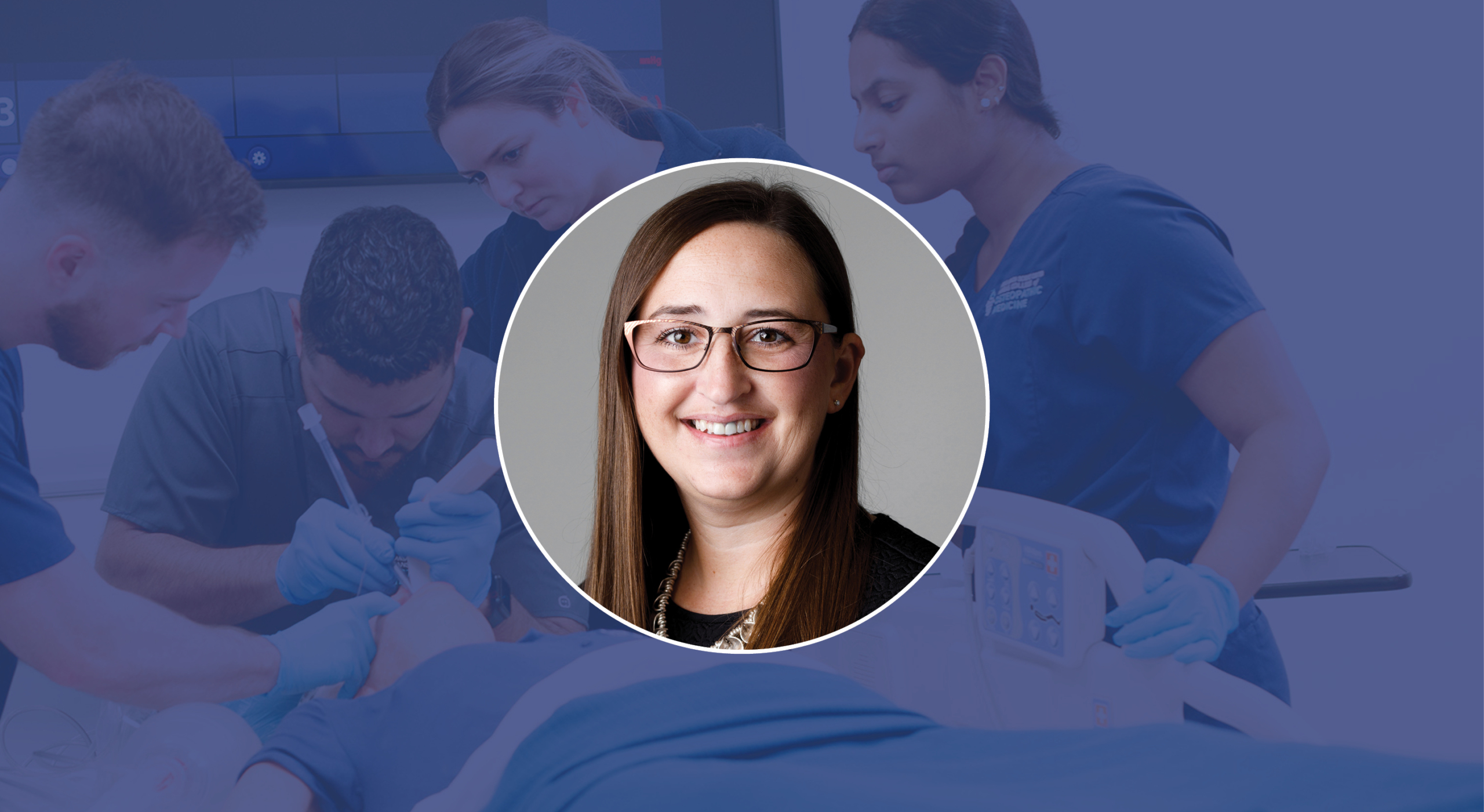Lab director Megan Bayer has learned through experience the importance of training future doctors to excel at all facets of patient care.
At the heart of every visit to a doctor of osteopathic medicine (DO) is a conversation between health care provider and patient. For these interactions to be successful, the patient must feel comfortable communicating uncomfortable details and believe that their concerns are heard. To prepare for this integral facet of the doctor-patient relationship, KHSC – KansasCOM students train in the Tokola Simulation Center under the guidance of Megan Bayer, MSN, KansasCOM’s director of simulation.
Bayer, a registered nurse with two decades in the field and a master’s degree in nursing education, focused much of her graduate school research on the effectiveness of simulation. “I was very interested in adult learning theory and how to teach clinical reasoning skills in an interactive teaching style,” she says. Throughout her career, Bayer has had a wide range of experience in patient-facing settings, including pediatric intensive care, emergency rooms, labor and delivery, postpartum, the NICU, and as a lactation consultant. “In my previous position at Wichita State University Campus of Applied Sciences and Technology (WSU Tech), I was director of simulation education,” Bayer says. “I first got involved with KHSC – KansasCOM when some of the founding deans came and visited my sim center there.”
How it works
Simulation is designed to allow the student-doctors to replicate patient interaction in a clinical setting. Paid actors called standardized patients (SP) come to the simulation center, which is divided into three separate areas. One area is designed to resemble an outpatient clinic, a second is set up like an inpatient hospital, and a third is outfitted for group instruction and for students to work with task trainers and manikins.
The Tokola Simulation Center
For an outpatient simulation, the SPs come to the center where they describe a range of symptoms based on a provided script, and the student-doctors go through the steps they have been trained to follow in doctor-patient interaction. Following the visit, the students are evaluated on their soft skills—which include greeting style, hand hygiene, and questioning techniques—and on the clinical components of the exam. Additionally, the SPs assess the student-physicians’ performance according to a checklist, and clinical faculty assess them by asking questions such as, “Did the student auscultate the abdomen before they palpated the abdomen, and did they listen to all the lung fields?” Students also learn how to document their visits with patients. “This provides a whole experience oftentimes called objective structured clinical examination or OSCE,” Bayer says.
The simulation center also offers a clinical skills lab, which is a versatile space used for briefing groups of trainees and performing a range of medical procedures, including intubation, administering an IV, and point-of-care ultrasound. Students practice techniques on sophisticated health care manikins as part of the lab’s safe and highly realistic learning environment.
“Our simulation lab is top notch in providing students with a real-life experience,” Nick Palisch, Ph.D., director of student services and affairs at KHSC – KansasCOM, says. “The technology capabilities within the simulation lab allow for variable learning experiences during their educational experience.”
A forward-looking approach to medical education
By exposing first-year students to the simulation lab, KHSC-KansasCOM faculty are helping their students develop communication and clinical reasoning skills in advance of their medical clerkships. Working on these skills throughout their first two years means students are better prepared when they begin clinical rotations.
“Providing students with a simulated experience during the first two years of their medical education provides them with the opportunity to learn and enhance medical skills that will prepare them for real-life encounters,” Dr. Palisch says.
Second-year student Chase Hearne says the simulation lab allows him to apply the skills he’s learned. “The lab gives us the opportunity to apply theoretical knowledge acquired in classrooms to practical situations and helps bridge the gap to support effective patient care,” he says. “These hands-on skills will be invaluable when transitioning to actual patients by increasing confidence, competence, and overall performance.”
Bayer, who has deep roots in Wichita, says, “KHSC-KansasCOM is a once-in-a-lifetime opportunity to be in on something from the ground up. I have a lot of gratitude to be able to help develop the simulation center, and I am very passionate about our community here in Wichita and Kansas as a whole.”

